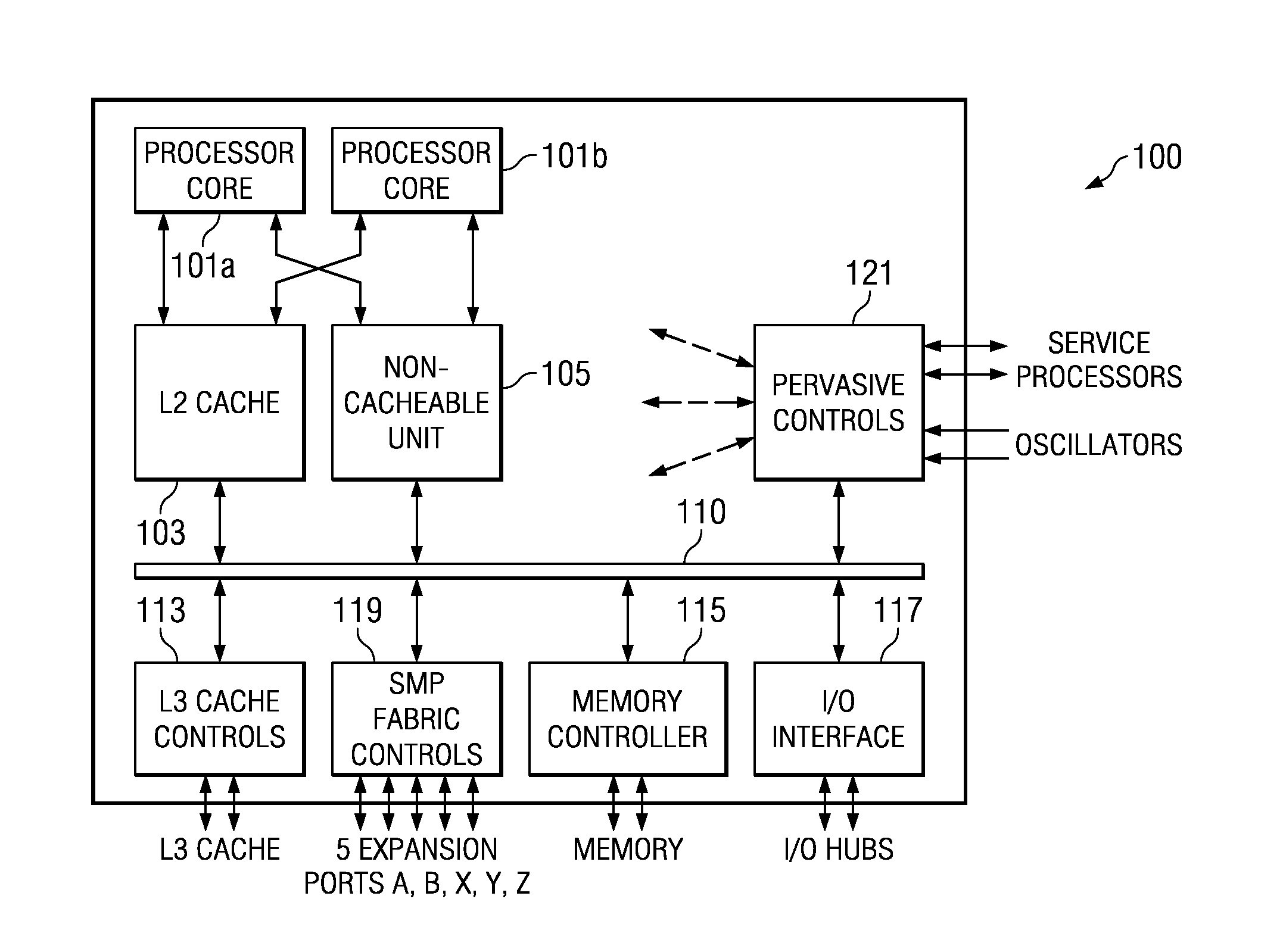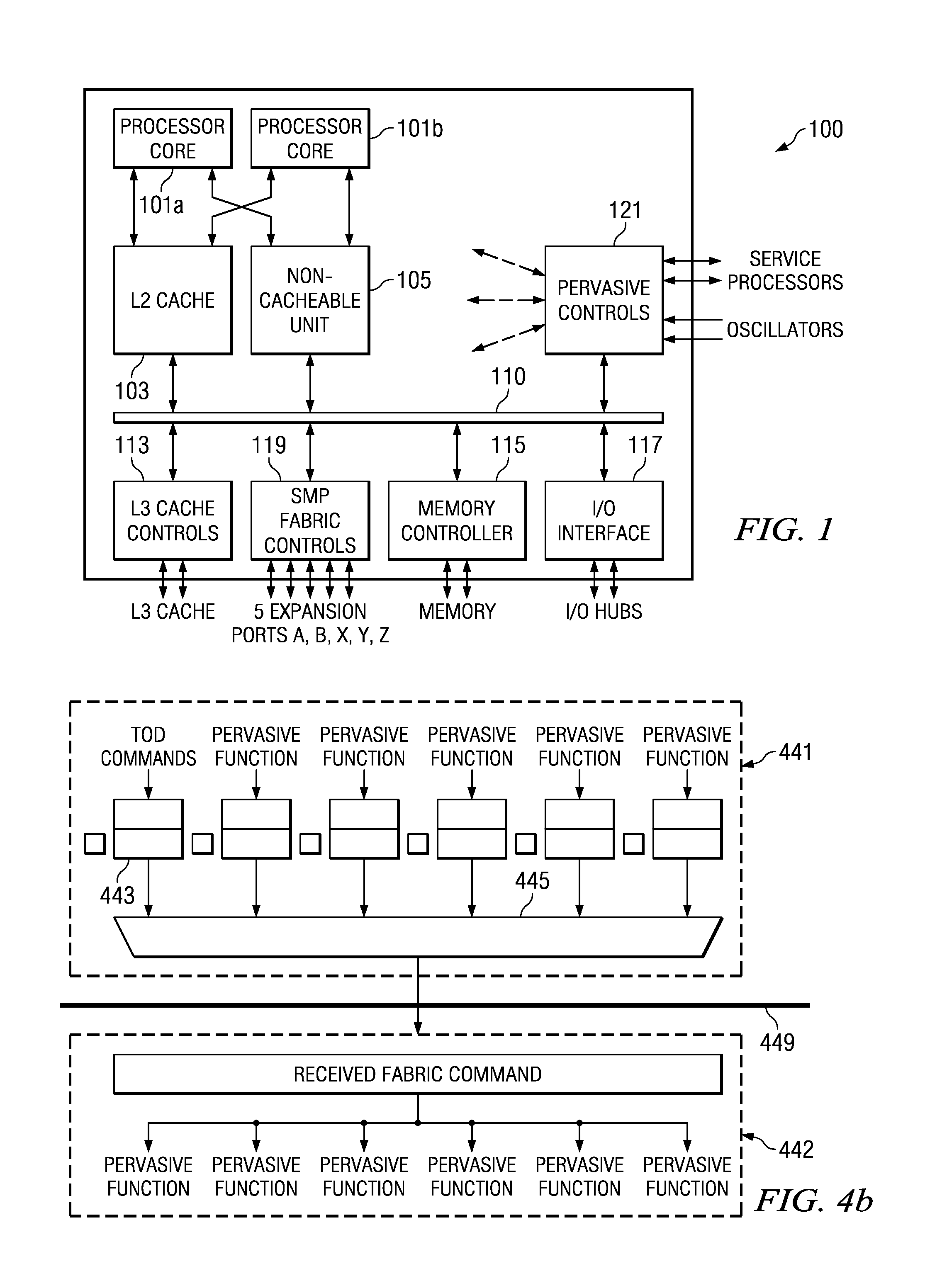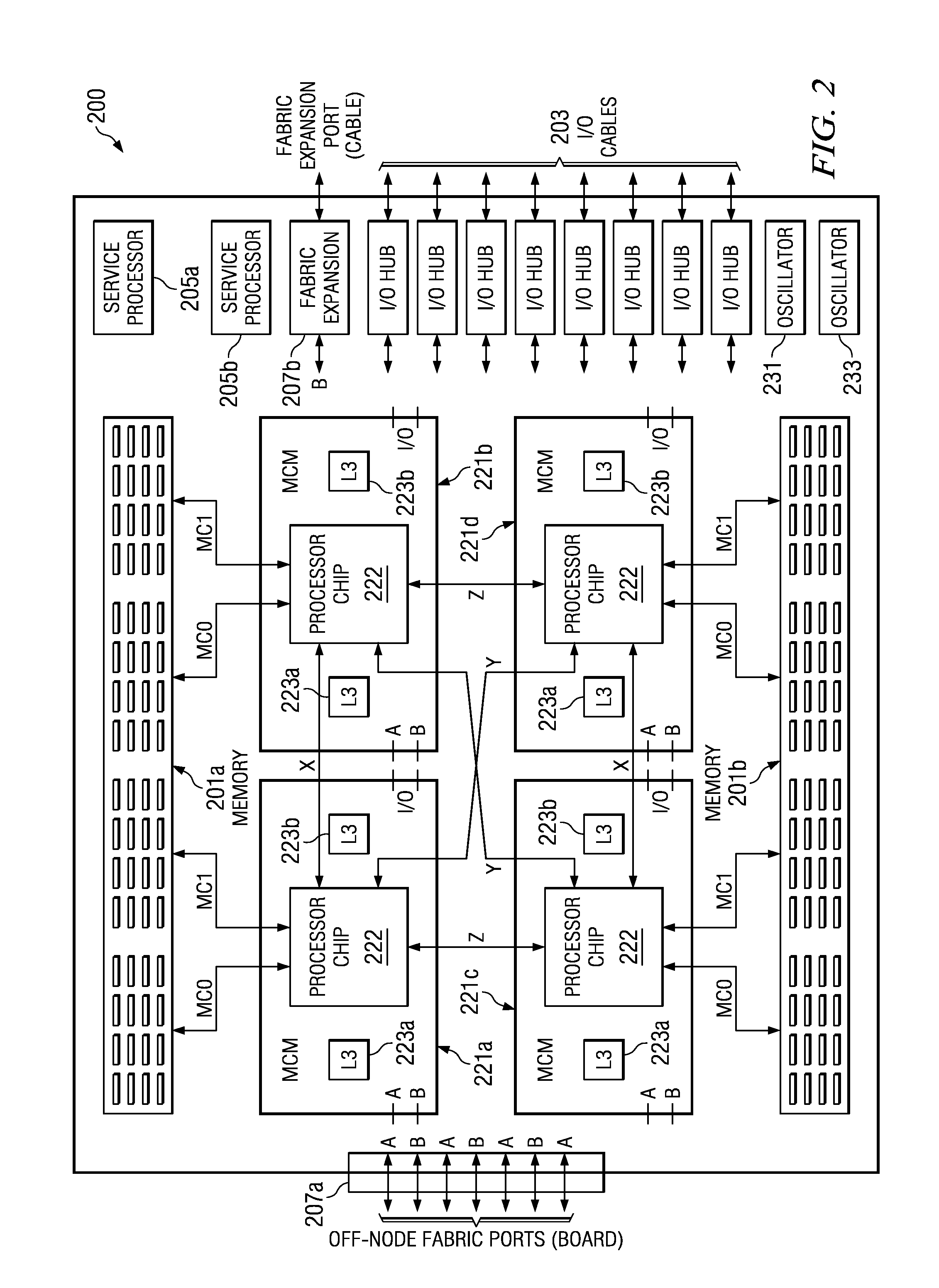Method for Fault Tolerant Time Synchronization Mechanism in a Large Scaleable Multi-Processor Computer
a multi-processor computer, fault-tolerant technology, applied in the direction of fault response, instruments, generating/distributing signals, etc., can solve the problems of becoming increasingly unmanageable to extend a single clock, clock or oscillator, idle a very expensive multi-processor environment, etc., to prevent the loss of time synchronization
- Summary
- Abstract
- Description
- Claims
- Application Information
AI Technical Summary
Benefits of technology
Problems solved by technology
Method used
Image
Examples
first embodiment
[0037]FIG. 2 shows a first embodiment configuration of a symmetric multiprocessor using the chip of FIG. 1 in the form of processor node 200. Processor node 200 may contain memory banks 201a and 201b, I / O hubs 203, service processors 205a and 205b, and ports or connectors 207a and 207b handling the A and B SMP fabric expansion ports from each of multichip modules (MCM) 221a, 221b, 221c, and 221d. SMP fabric expansion ports X, Y, Z interconnect MCMs 221 within node 200, while ports A, B interconnect MCMs across multiple different nodes. Each multichip module may be identical in its hardware configuration, but configured by software to have varying topologies and functions as, e.g. between master and slave functions. Within a MCM may be found chip 222 of FIG. 1, as well as level 3 cache memory 223a and 223b. Processor node 200 may have primary oscillator 231 and secondary oscillator 233 that are each routed to each chip found on the processor node. Connections between the oscillators ...
second embodiment
[0038]FIG. 3A and FIG. 3B shows a second embodiment configuration of the symmetric multiprocessor using the chip of FIG. 1 in the form of processor drawer 300. Drawer 300 may place each MCM 321a, 321b, 321c, and 321d on a dedicated card and interconnect among all cards through a board 310. Memory banks are dispersed among the cards 301a, 301b, 301c, and 301d. Like FIG. 2, the MCM of the processor drawer may be identical in hardware configuration but configured by software to have varying topologies and functions within the SMP framework. Within a MCM may be found the chip 343 of FIG. 1, as well as level 3 cache memory 323a and 323b. I / O hubs 303a and 303b may be placed on a card with a MCM. The drawer may provide service processors 306a, 306b for initialization and supervision, as well as primary oscillator 331 and secondary oscillator 333. Service processors and oscillators may interconnect to each card via the board 310.
[0039]The drawer configuration and the node configuration-tho...
PUM
 Login to View More
Login to View More Abstract
Description
Claims
Application Information
 Login to View More
Login to View More - R&D
- Intellectual Property
- Life Sciences
- Materials
- Tech Scout
- Unparalleled Data Quality
- Higher Quality Content
- 60% Fewer Hallucinations
Browse by: Latest US Patents, China's latest patents, Technical Efficacy Thesaurus, Application Domain, Technology Topic, Popular Technical Reports.
© 2025 PatSnap. All rights reserved.Legal|Privacy policy|Modern Slavery Act Transparency Statement|Sitemap|About US| Contact US: help@patsnap.com



